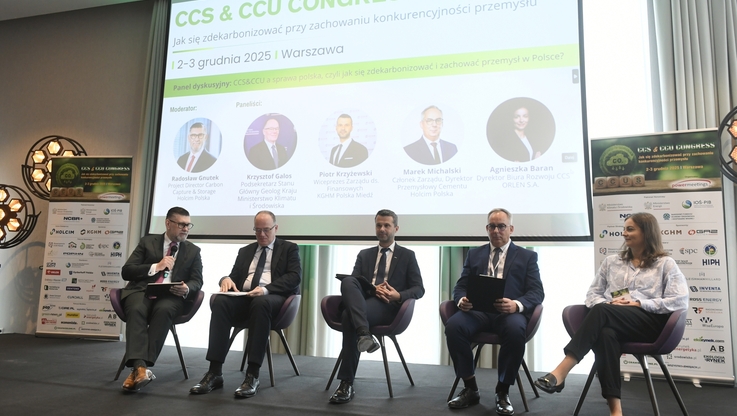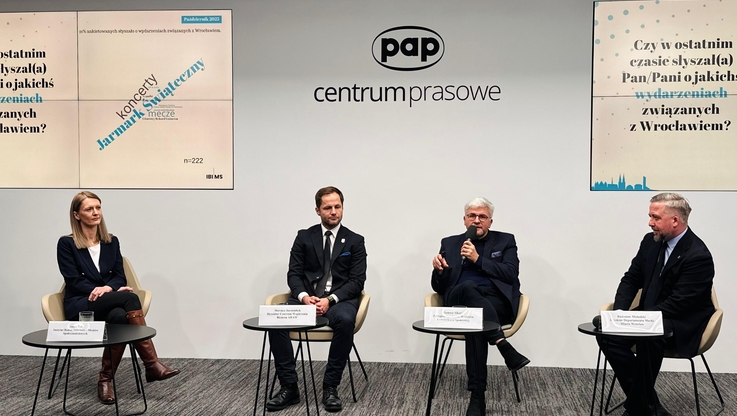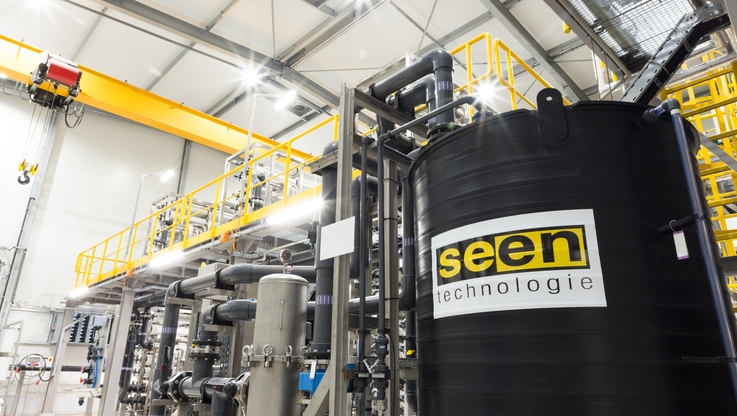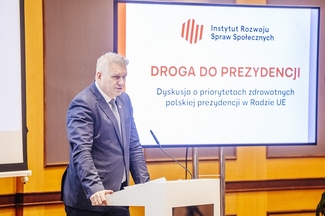Pobierz materiał i Publikuj za darmo
Space optimization and re-tooling at the Mirabel facility, which began last month, will accommodate final assembly of the first CSeries aircraft required for the flight test and certification program. The Complete Integrated Aircraft Systems Test Area (CIASTA), the first area at the Mirabel plant developed for the CSeries aircraft program, is progressing on schedule, with the installation of systems rigs currently underway.
In addition, new buildings for the CSeries aircraft program will include a supplier satellite area; final assembly structural joining and pulse line areas; an area for pre-flight testing; paint shops; and a delivery and administrative centre.
Production, quality and ergonomic requirements are driving Bombardier's technical approach to the final assembly of the CSeries aircraft. While they will be shorter than the 128-foot (39-metre)-long CRJ1000 NextGen regional jet, the largest aircraft currently produced at the Mirabel plant, the CSeries aircraft will have a fuselage with a larger diameter, their wings will be longer and their tails taller than those on the CRJ1000 NextGen aircraft. Bombardier will therefore employ different final assembly techniques to those used for its regional jets. As an example, two pairs of robots will be used to drill holes, apply sealant and install fasteners to join the major sections of the CSeries aircraft's fuselage.
"Advanced robot technology will provide predictable repeatability, enhance quality and prevent ergonomic issues on the assembly line," said Francois Minville, Vice President, CSeries Manufacturing, Bombardier Commercial Aircraft. "The fuselage of the CSeries aircraft is 12 feet (3.7 metres) in diameter, which presents an assembly challenge using our conventional methods. The benefit of the robots is they can work on the top, the side and underneath the aircraft without any limitations."
A moving production line is being introduced at Bombardier's St-Laurent Manufacturing Centre, where major components of the CSeries aircraft, such as the cockpit and aft fuselage, are being produced, and a moving final assembly line is planned for Mirabel. Compared to many other industries, aircraft manufacturing has traditionally been characterized as a low volume, long cycle time industry. The introduction of a moving final assembly line creates a dynamic environment that improves production efficiency.
To reduce the cycle time required to assemble a larger and more complex airliner, Bombardier is introducing advanced processes to ensure that high quality parts are received at the plant on time.
"We are enhancing our quality culture at Bombardier to support the production of the CSeries aircraft," said Mr. Minville. "Through the sharing of knowledge and best practices, we are building on our experience with aircraft programs that involve risk-sharing suppliers and are refining our processes."
Beginning with the development of the ultra long-range Global Express business jet in the mid-1990s, Bombardier has obtained considerable experience working with international partners and a global supply chain in building large structural aircraft components, such as wings and fuselages. To augment this experience, new advanced quality planning (AQP) and advanced logistics planning (ALP) processes are being introduced to identify potential areas of risk in manufacturing, systems integration and supply chain logistics on the CSeries aircraft program. The introduction of AQP and ALP highlights Bombardier's embrace of preventive quality tools such as Process Control Plans, Mitigation Approach Plans, and Failure Mode Effects Analysis (FMEAs) commonly employed in the technology, health-care and automotive industries.
Bombardier teams started rolling out the advanced quality logistics planning methodology to suppliers on the CSeries aircraft program in 2010, and the system has now been deployed to 26 tier one suppliers at 46 manufacturing sites.
The CSeries aircraft, which are optimized for the single-aisle 100- to 149-seat market, will deliver the lowest operating costs in their class, exceptional operational flexibility, widebody comfort and an unmatched environmental scorecard. Bombardier's goal is to capture up to half of its forecasted market demand for 6,700 aircraft in the 100- to 149-seat commercial aircraft market segment. This segment is valued at $393 billion over the next 20 years.
Bombardier has launched 28 new aircraft programs since 1989, including business, commercial and special mission aircraft. The company's continued investments in engineering and manufacturing excellence have helped established it as the world's third largest civil aircraft manufacturer.
About Bombardier
A world-leading manufacturer of innovative transportation solutions, from commercial aircraft and business jets to rail transportation equipment, systems and services, Bombardier Inc. is a global corporation headquartered in Canada. Its revenues for the fiscal year ended January 31, 2011, were $17.7 billion, and its shares are traded on the Toronto Stock Exchange (BBD). Bombardier is listed as an index component to the Dow Jones Sustainability World and North America indexes. News and information are available at http://www.bombardier.com or follow us on Twitter @BombardierInc.
Notes to editors
Images of CSeries aircraft are available in the press releases section at: http://www.bombardier.com.
For additional images, video and product information on the CSeries aircraft, please visit: http://www.nowisthefuture.com.
Follow @Bombardier_Aero on Twitter to receive the latest news and updates from Bombardier Aerospace.
Bombardier, CRJ1000, CSeries, Global Express and NextGen are trademarks of Bombardier Inc. or its subsidiaries.
Contacts:
Bombardier Aerospace
John Arnone
tel. 1-416-375-3030
http://www.bombardier.com
Źródło informacji: Thomson Reuters ONE
Pobierz materiał i Publikuj za darmo
bezpośredni link do materiału
| Data publikacji | 08.04.2011, 13:10 |
| Źródło informacji | PAP |
| Zastrzeżenie | Za materiał opublikowany w serwisie PAP MediaRoom odpowiedzialność ponosi – z zastrzeżeniem postanowień art. 42 ust. 2 ustawy prawo prasowe – jego nadawca, wskazany każdorazowo jako „źródło informacji”. Informacje podpisane źródłem „PAP MediaRoom” są opracowywane przez dziennikarzy PAP we współpracy z firmami lub instytucjami – w ramach umów na obsługę medialną. Wszystkie materiały opublikowane w serwisie PAP MediaRoom mogą być bezpłatnie wykorzystywane przez media. |






